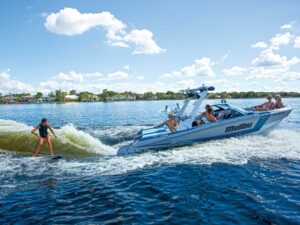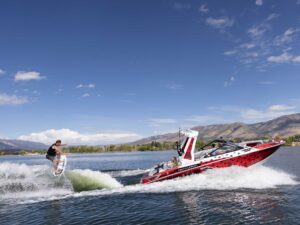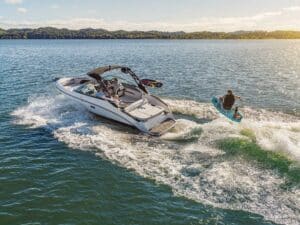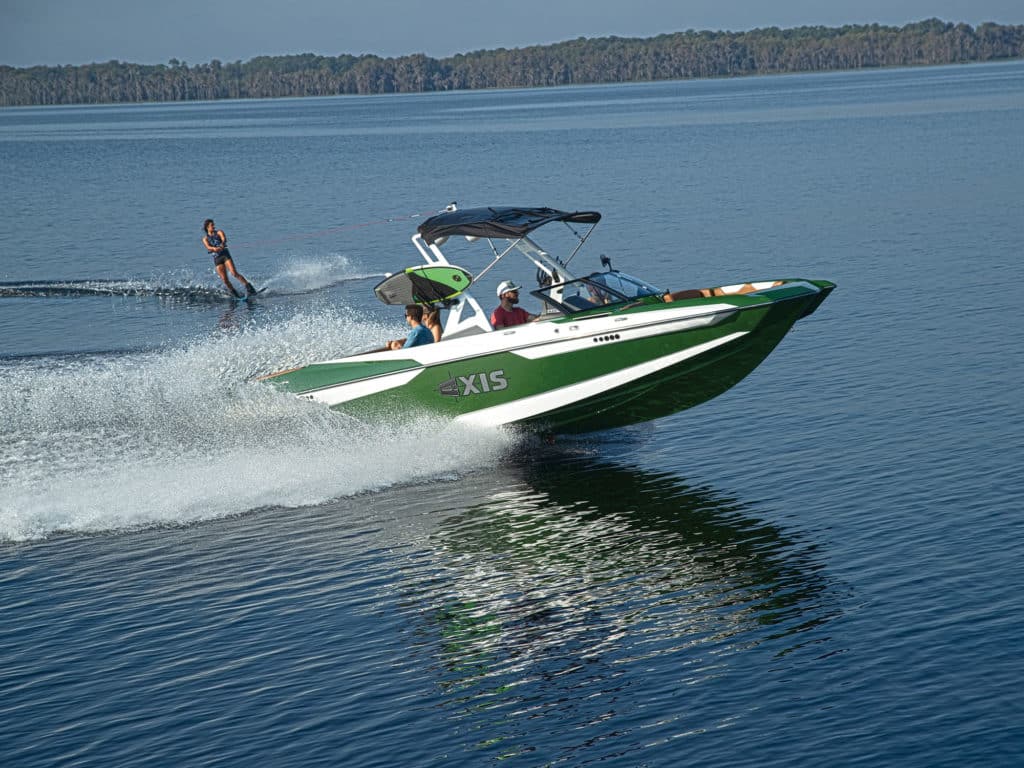
All good tow-boat drivers know the basics: Always designate a spotter. Make sure the rider and spotter understand hand signals to communicate. Choose a safe path, maintain a safe speed, and avoid hazards that could endanger your crew. Keep a downed rider in view at all times by approaching on the driver’s side.
Always turn off an outboard or sterndrive, or make certain an inboard is in neutral, before a rider approaches the stern. Never drive under the influence of alcohol or drugs.
With experience, the game gets upped. As long as the rider indicates they’re OK, slow to neutral after a fall, then return at idle to avoid kicking up rollers. Focus on the water ahead, but keep a roving eye on speed and the rearview mirror. Should a rider bobble, slow down to allow them time to recover before resuming your normal speed.
The best watersports boat drivers, however, take it up yet another notch by tailoring their driving to each discipline. Here’s a few of their insider tips.
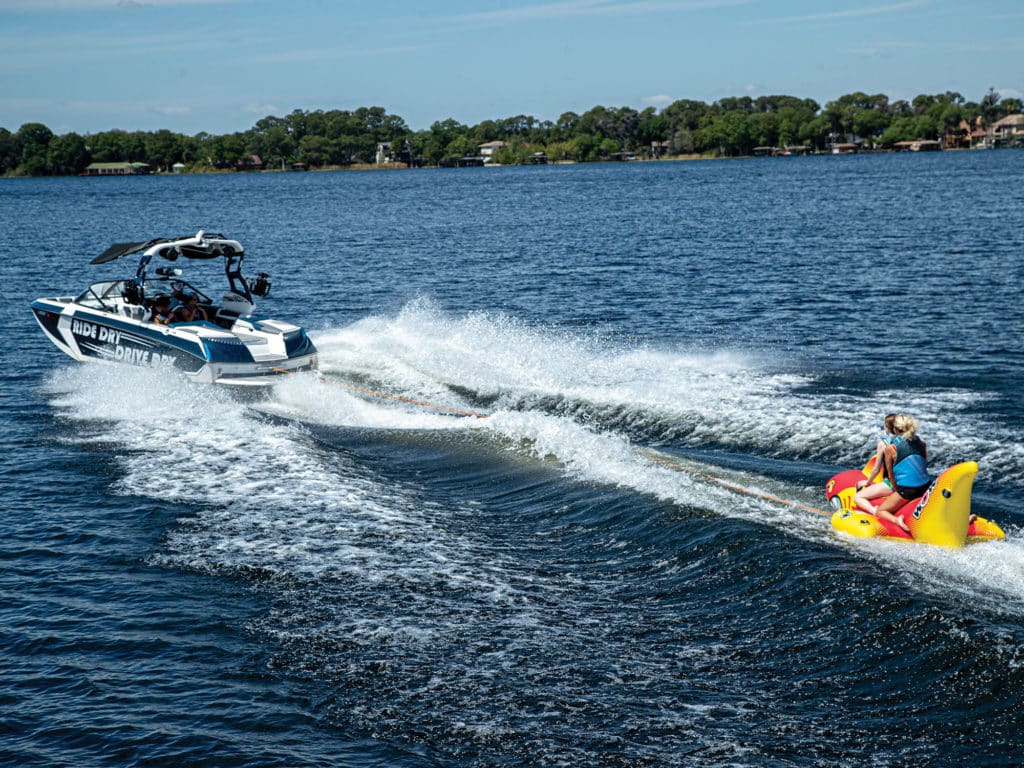
Tubing
For a fun, safe ride, watch your speed. A mere 8 mph is best for children, and 15 to 18 mph is plenty for adults. To send the inflatable skidding outside the wake, initiate a series of controlled S-turns to push the tube over the wakes in each direction. Avoid cranking random sharp turns at high speed; in addition to a chaotic, potentially dangerous ride, the towrope will often go slack, then jerk riders as it snaps taut.
Whips can be fun, but proceed with care. Even when under 20 mph, a tube can accelerate to far greater speeds, increasing the chance of injury. Never punch the throttle, and be prepared to back off the speed and turn should the tube accelerate too much. Apply the same thought process to wakes; gentle can be fun, but large at high speed can be dangerous.
Water-Skiing and Wakeboarding
Skiers and board riders appreciate smooth water, straight passes, a steady speed, and clean, symmetrical wakes.
Drive in a pattern that will dissipate your rollers. Make a straight pass in one direction, a smooth turn at the end of the run, and retrace your original path. For riders who like to roam, break a curving shoreline into longer, straighter segments with brief turns. Use a visual target onshore to maintain as straight a path as possible.
Use speed control if available. If not, keep a gentle hand on the throttle and make small adjustments while watching the tach or speedo. Vary your acceleration to the rider’s size and choice of ski or board during deepwater starts. Wakeboards don’t need aggressive acceleration thanks to their larger surface area; a child on two skis requires less force than an adult on a slalom ski.
For both disciplines, anticipate the pull a rider can exert, such as a slalom skier accelerating out of a turn or a wakeboarder progressively cutting toward the wake. Be ready to throttle up ever so slightly to compensate for the pull, then back off as the skier sets up for the next turn or the rider gets airborne.
Read Next: How To Pick Up A Downed Waterskier, Wakesurfer, Wakeboard Rider or Tuber
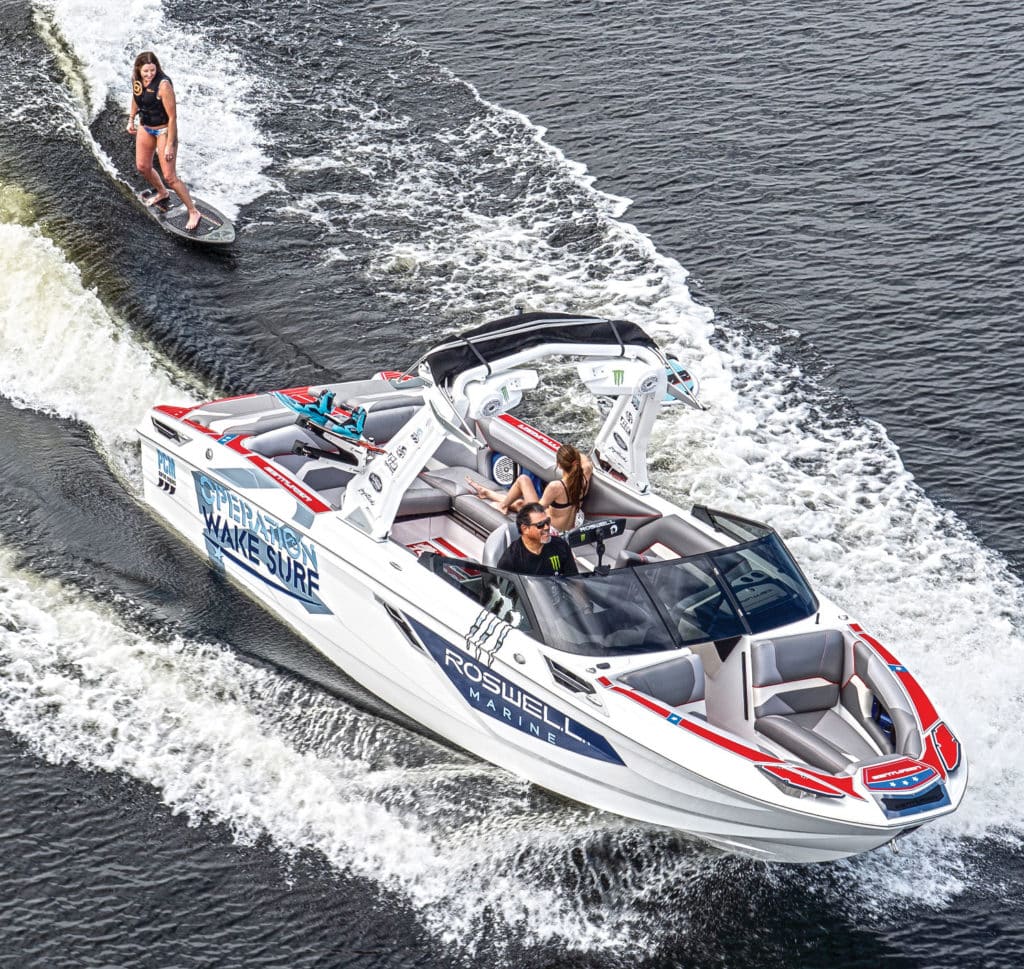
Wakesurfing
A gradual, smooth acceleration is all that’s needed to pull a wakesurfer atop the water. Once at the target speed (10 to 11 mph), let speed control take over if possible. Nonplaning speeds, significant ballast loads and wake-enhancing hardware can make it challenging to maintain speed manually. Be prepared for significant bow rise; raise the helm seat, flip up a seat bolster or add seat cushions to ensure you maintain good visibility forward, and stay on the alert for boat traffic or other obstructions.
Underway, run a straight path. Deep water is preferable; shallow water can decrease the wake size.
Because wakes can be massive, stay well away from the shoreline and other boats, and be careful when turning back for a downed rider. Shift to neutral, allow wakes to spread, then turn tightly and proceed back toward the rider at idle to avoid swamping the bow or taking water over the gunwales.

